




Uniform, dark green, high-quality fruit, 32 - 40cm long.
Short internodes and high yield potential.
Horizontally orientated, dark green leaves.
Strong disease resistance.
Less vigorous plant for optimal light penetration.
IR: Ccu, CVYV, CYSDV and PM

Dark green high quality, slightly ribbed fruit (33 - 38 cm).
Uniform fruit size on main stem and laterals.
Very high yield potential.
Vigorous and open growth habit.
HR: CVYV, IR: CYSDV and PM
Very high yield potential.
Vigorous and open growth habit.
Very unifrom, cylindrical mini fruit with no/short necks.
Dark green, high quality, slightly ribbed fruit (18 - 20 cm).

PM, CMV, CVYV, CYSDV and ZYMV resistance.
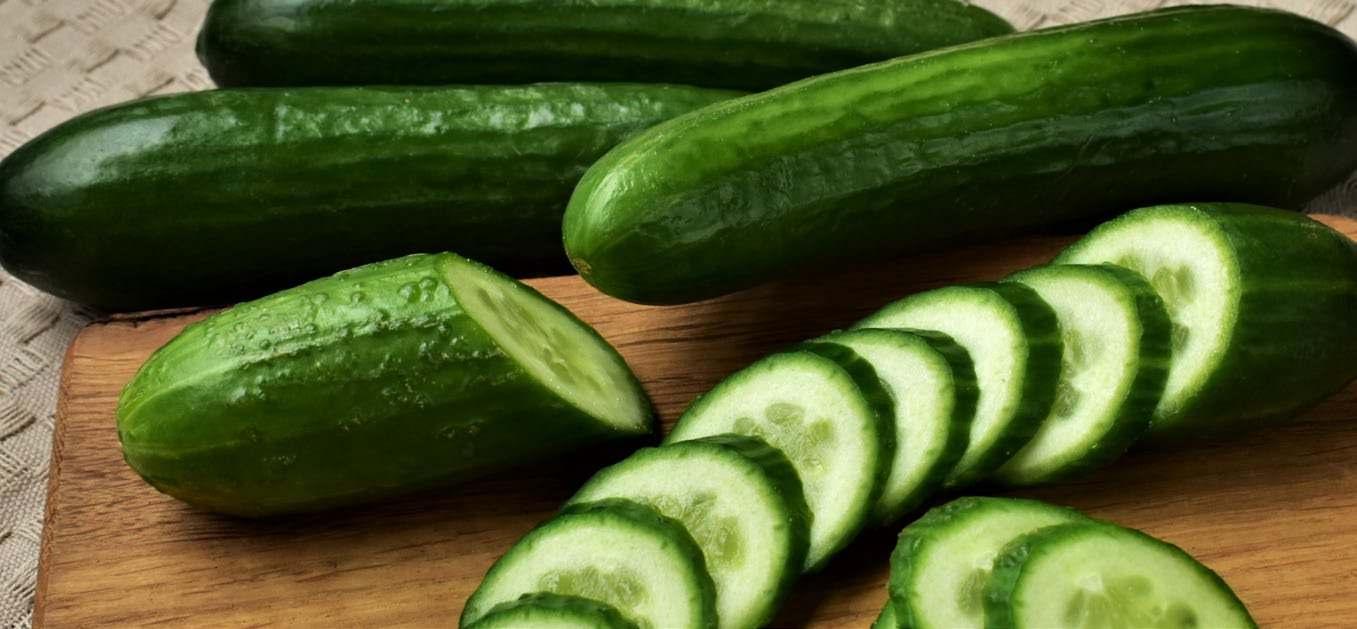
Very high yield potential.
Vigorous and open growth habit.
Very uniform, cylindrical fruit with no/short necks.
Dark green, high quality, slightly ribbed fruit (32 - 38cm).
HR: CVYV, IR: CYSDV and PM
Ideal supermarket size, 33 - 36 cm
Very high yield potential
Open growing habit for good ventilation and easy spraying
IR: CVYV, CMV and PM




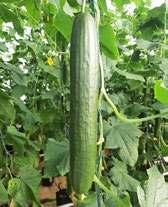
Medium to dark green high quality, fruit (18 - 24cm) with spines.
Uniform fruit size.
Very high yield potential.
Vigorous and open growth habit.
Resistance to CVYV, CMV and PM.
COVER
Butternut squash, known in Australia and New Zealand as butternut pumpkin or gramma, is a type of winter squash that grows on a vine. It has a sweet, nutty taste similar to that of a pumpkin.


4 SA agricultural jobs up marginally in the second quarter

4 Technology keeps cherries cool
5 Alternative avocados

5 India approves in-transit cold treatment for South African apples and pears

6 Namibia and Botswana bans South African vegetables
8 RSA group CEO announced as new IFPA Chairperson




8 Food producer spends R4,2 billion with women farmers
9 Organic wineries noble pursuit for sustainability
EDITORIAL
Willie Louw(Group editor)
Carien Daffue
(Editor) 018 293 0622 info@mediakom.co.za PO BOX 20250, Noordbrug, 2522
ADVERTISING
Jana Greenall 011 476 3702 082 780 9914 mediacom@lantic.net

DESIGN Mercia Venter studio.chatnoir@gmail.com
Bly ingelig en volg ons op Facebook. Keep up to date and follow us on Facebook.







- Groente en Vrugte/ Vegetables and Fruit

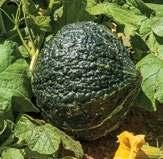
- www.facebook.com/GroenteenVrugte/

SUBSCRIPTIONS
SPECIAL RATES FOR GROUP SUBSCRIPTIONS AVAILABLE
Complete and send the subscription form to: MEDIACOM, PO BOX 20250, NOORDBRUG 2522. Tel: 018 293 0622 Email: info@mediakom.co.za
Name:






Banking Details: Mediacom, ABSA, 632005, Acc no.:01-08118-0241










While the 2021/22 production season started on a rough footing of excessive rains, various subsectors of agriculture managed to recover when the rains slowed. The recovery was seen in the decent yields in horticulture, grains, sunflower seed and even record yields in soybeans. The primary agricultural jobs data also reflect the vibrancy of the sector. In the second quarter of this year, there were 874 000 people in primary agriculture, up by 1% year-on-year (and up 3% quarter-on-quarter).
Notably, this is well above the long-term agricultural employment of 780 000. The increased farm activity during the harvesting process of some vegetables, fruits and field crops necessitated increased employment during the quarter. The subsectors that shaved jobs during this period were livestock and aquaculture (fish farms and hatcheries). The decline in employment in the livestock is understandable as the subsector faces the spread of foot-and-mouth disease, which has led to a temporary suspension of exports and numerous business activities, thus weighing on farmers' finances. Moreover, the higher feed costs are an additional challenge for the livestock industry.
Most provinces registered job gains from a regional perspective except for KwaZulu-Natal and North West. These are also amongst the regions that suffer from the spread of
foot-and-mouth disease. The floods in KwaZulu-Natal in April this year might have also negatively affected the employment prospects in the second quarter of this year. With that said, these job losses were overshadowed by increased employment in other provinces.
Looking ahead, data from the third quarter of the year could continue to show robust employment conditions, although possibly lower than the second quarter. The delayed harvest in some subsectors because of a relatively late start of the season will mean that people were in the fields harvesting for a more prolonged period than the previous year; hence we maintain a somewhat favourable view of employment conditions in the sector. Still, the financial pressures from animal disease and trade restrictions facing labour-intensive subsectors like citrus remain the major risks to job prospects.
Aside from the subsector-specific issues, South Africa's agriculture faces challenges around the inadequate functioning of network industries – roads, rail, ports, water, and electricity, and poorly functioning municipalities, leading to an increase in the cost of doing business. Moreover, the challenging economic conditions in the country have, in some areas, led to labour unrest, which also requires close monitoring.
Source: Agbiz e-Newsletter – 25 August 2022

Agricultural businesses consistently require tailor made solutions which are sustainable and cost effective to ensure that they provide the market with quality products.
Euca Technologies, one the country’s leading end-to-end monitoring solutions provider, offers customers products that expand on the integrity of their operations by seamlessly bringing together smart data acquisition and quality assurance for the end user as well as the environment.
Euca Technologies can find solutions for their clients’ needs. They have a team of experts who, coupled with their technology, offer bespoke solutions to their clients.

One such bespoke solution is the overhead cooling system that was installed in 2021 at Cherries of Eden, a cherry orchard in Mashihing (Lydenburg), Mpumalanga.
“The cherry trees are indigenous to Canada, we had to make sure that the environment in which they are growing simulates conditions that are conducive to producing the best yield possible,” explains Peter Van Zyl, Euca Technologies Sales Director.
“Cherries of Eden utilises our NviroSense system along with IO controllers, temperature and humidity data loggers as well as thermacouples. The thermacouples have been in-
serted into the actual cherry blossoms at different heights and areas within the orchard to ensure we obtain accurate data. Through these we can assist our client to create and maintain the environment to be favourable for this cherry strain,” adds Mr Van Zyl.
Put simply, the system installed by Euca at Cherries of Eden is a “detect, monitor and respond” system but can be adapted to any applications that may be needed in future by the client. The innovative and adaptable nature of NviroSense allows for various applications to be added on as per client requirements.
“Our client at Cherries of Eden was very open to the system as they needed a solution that could assist them with monitoring technology over a vast area; a system that allows them to log in remotely and they needed their various software platforms centralised. We as Euca then stepped in to assist them in addressing these needs and they are already seeing the benefits of the system.
“According to the client, the main principle with the overhead cooling system is to keep the trees in dormancy. If they stay cold, they perform and grow better in the summer – that way they’ll be able to obtain healthier and stronger growth and better yield potential,” concludes Mr Van Zyl.

In an era where major industries are being disrupted, agriculture and food products are also in the firing line. Replacements for meat and milk are constantly featured with the promise of being healthier and more sustainably produced.
Now the focus has turned to the creamy avocado, hero of the banting diet. Arina Shokouhi, a recent material futures graduate from University of Arts, London’s Central Saint Martins College, working together with the University of Nottingham’s Food Innovation Centre, has produced the “evocado”, an avocado alternative that is made using ingredients found in Britain, including broad beans, hazelnuts, apple and rapeseed oil.
“Evocado is an imitation that tries to improve upon reality, not merely reproduce it. And, hopefully, it will fool even the most sensitive of hipster tastebuds,” remarks Ms Shokouhi. But the flavour of avocado is quite subtle and finding the perfect recipe to replicate the taste of an avocado was a challenge. The primary ingredients of the evocado were chosen because they are all farmed in Britain and thus come with a significantly lower environmental impact than the traditional avocado.
Rapeseed oil was selected instead of olive oil; broad beans contain a lot of tannins adding the bitter beany flavour. Hazelnuts brought fats into the product, boosting both its creaminess and nuttiness. Finishing off the fruit is a skin made of wax, and a whole nut in place of the usual avocado stone.
The evocado is similar appearance to the Hass avocado cul-
tivar, a dark-skinned avocado type that makes up 80% of the avocado trees grown in South Africa South Africa exports almost half of its 132 600 ton crop as fresh avocados, mainly to Europe and the United Kingdom.

Ms Shokouhi insists this energy- and water-intensive crop is contributing to environmental issues and says “it was designed by identifying the chemical elements of avocados and the functionality of each molecule to try to find equivalents from more local and low-impact sources that do not rely on threatened crops.”
Grafted avocado trees usually start bearing in the third year after planting. Planting densities of approximately 400 trees per hectare are recommended, but within a few years overcrowding and encroachment problems will occur as trees could take 7 to 10 years to become fully productive. Like other types of fruit bearing trees, avocados need ample water to thrive and produce fruit. Young trees need more frequent watering than mature trees to establish a strong root system.
The estimated total world production for avocados exceeds 8 million metric tonnes. According to Ms Shokouhi, avocado production needed to meet global demand, drives deforestation and damages biodiversity. She argues that avocados are an incredibly energy- and resource-intensive food to produce because of high water requirements, monoculture and production that is limited by suitable climatic conditions.
Although exported globally, avocados are notoriously difficult to ship because of how delicate they are. Environmentally conscious shoppers are aware that many become damaged in transit and never make it onto supermarket shelves.
The government of India has approved in-transit cold treatment for South African apple and pear exports to India.
The advantage of the cold treatment of the products intransit is that better quality and fresher fruit arrive at the destination country. This change in the process allows shippers to increase the length of the season and consumers to get fresher fruit.
Speaking about the development, Jacques du Preez, Hortgro’s General Manager for Trade and Markets, said: “We welcome the government of India’s decision as it allows us to ship quality fruit from South Africa to India in a short span of time. We would like to thank the Department of Agriculture, Land Reform and Rural Development and the South African High
Commission team in India.
“With the in-transit cold treatment procedure, I believe the suppliers and the Indian importers both stand to benefit as the transit time reduces considerably. South African apples and pears have received a phenomenal response from Indian consumers, and we believe that the volume will rise significantly due to this announcement.”
Since the beginning of 2022, South Africa has exported more than 2,5 million boxes of apples and pears to India and the demand is increasing year on year. Apple varieties such as Royal Gala, Bigbucks and Top Red have remained favourites, while for pears, Packhams, Vermont Beauty and Forelle have ruled over consumer palettes.
For more information contact Jacques du Preez: jacques@hortgro.co.za.
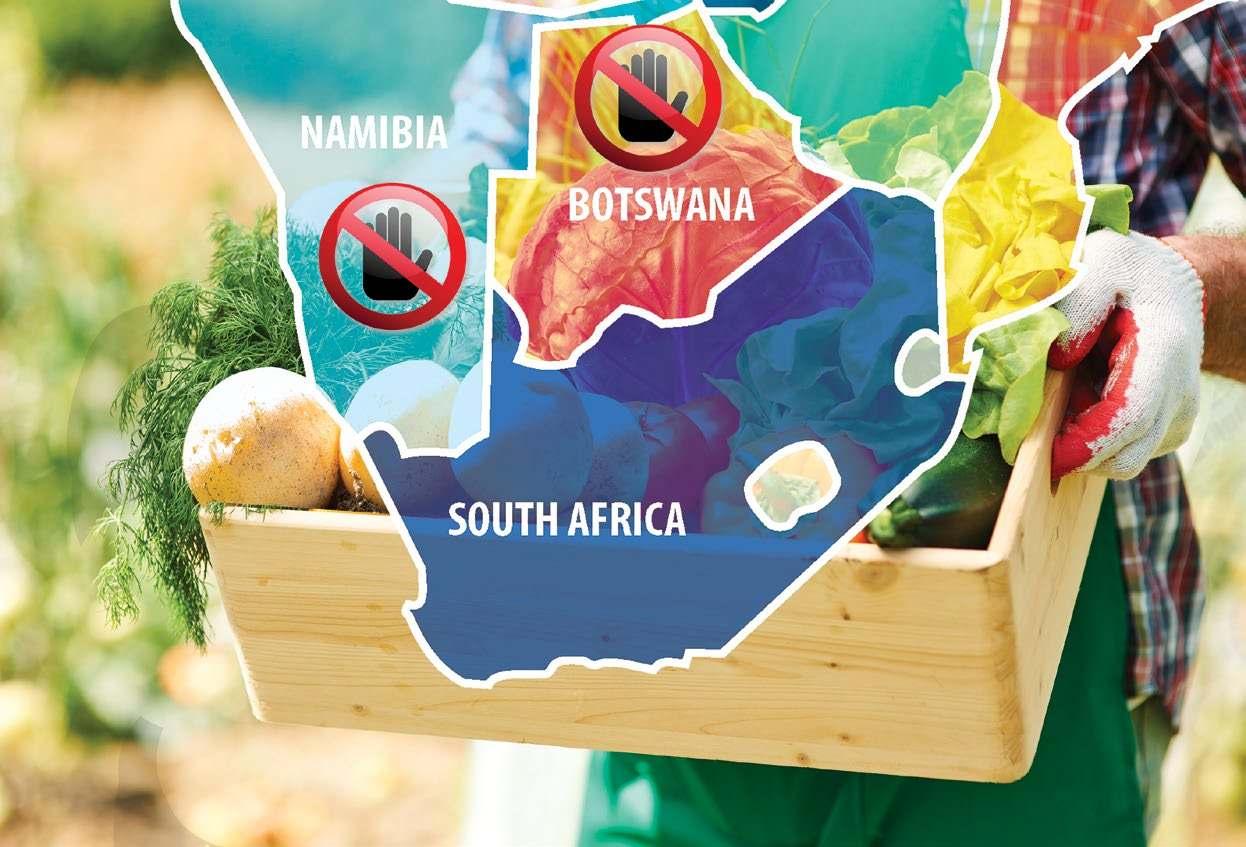
In a recent statement from Agri SA it was stated that the organisation wrote to Minister Thoko Didiza, Department of Agriculture, Land Reform, and Rural Development, in Augsut 2022 to request her urgent intervention after Botswana and Namibia took unilateral action to block a number of South African agricultural commodities from entering their borders. With the jobs and revenue at stake, government was requested to immediately respond to this unjustified action in violation of the Southern Africa Customs Union (SACU) Agreement.
The bans currently include tomatoes, potatoes, beetroot, cabbage and coloured peppers amongst other commodities.
The actions by Botswana and Namibia are particularly egregious as they do not stem from any wrongdoing by South African farmers. Rather, these countries have cited the need to protect their own local production even as they continue to export their produce to South Africa. And this is not a short-term measure. The government of Botswana only plans to review the bans in two years, and it has already indicated that this review will likely expand – not reduce – the list of protected products.
The South African government must therefore act immediately, according to Agri SA, to reverse this damaging trend. If government cannot secure the reversal of these unilateral bans, Agri SA is calling on government to implement reciprocal measures and take such further action as is necessary to protect local farmers. This includes the possible halting of payments to these countries from the Common Revenue Pool (the fund consisting of all customs, excise and additional duties collected in the Common Customs Area) until the borders
are re-opened to South African commodities.

Unfortunately, despite the threat the bans pose to the South African economy, Agri SA’s Agricultural Trade Forum has had no response to its requests for engagement with the Department of Agriculture, Land Reform and Rural Development (DALRRD). According to Agri SA’s statement this is deeply worrying given the implications of these unjustified bans.
South African farmers already faces immense competitive challenges as the national minimum wage of R23.19 far exceeds the labour costs in Namibia and Botswana at R12.23 and R5.05 respectively. The additional hardship the bans put on South African farmers violate the letter and the spirit of the Southern Africa Customs Union Agreements.
Agri SA has also become aware of alleged efforts to encourage South African farmers to shift operations to these neighbouring countries. If these bans are in furtherance of this agenda, South Africa must act to protect local operations and local jobs.
South Africa has to date been slow to act in demanding that SACU member states comply with the agreement. This has been so even as produce from Botswana has introduced the Tuta Absoluta pest to South Africa. That South Africa’s accommodating approach to the agreement has been met with these harmful bans demands a response from the South African government.
“It is imperative that DALRRD meets with the Agricultural Trade Forum as a matter of urgency, and that it takes appropriate action before the agricultural sector suffers irreparable damage,” says Agri SA.


Jaco Oosthuizen, CEO of RSA Group, has been announced as the new Chairperson of the International Fresh Produce Association (IFPA) Southern Africa Country Council, a position he will hold for the next three years.
Trevor Dukes, outgoing Chairperson and CEO of the Fruit Farm Group South Africa (TFFGSA), handed over to Mr Oosthuizen at the IFPA VIP Members-Only Reception held on the eve of the inaugural IFPA Southern Africa Conference recently.
On 1 January 2022, the Produce Marketing Association (PMA) and United Fresh created the International Fresh Produce Association (IFPA) by combining their resources and knowledge to better serve the industry as one association. IFPA is the largest industry association serving the entire fresh produce and floral supply chain.

Reflecting on the last three years, Mr Dukes said it was a privilege to act as Chairperson of the SA Country Council and to serve on the IFPA global board. He said IFPA SA is a unique organisation that cuts across all commodities and all facets of
the fresh produce supply chain to serve the industry and its members.
Mr Dukes thanked the country council for their support during his term. He wished Mr Oosthuizen well and said he does not doubt that Oosthuizen will successfully lead the country council and association with the same commitment and passion he has displayed throughout his long career in the South African fresh produce industry.
In his acceptance speech, Mr Oosthuizen referred to the extraordinary leadership that Dukes showed since the start of the COVID-pandemic and how he succeeded in keeping the country council together, keeping them motivated and maintaining connections through virtual gatherings.
“Despite the effect of the pandemic on the fresh produce sector, IFPA Southern Africa sustained its membership and added value for members. The opportunity to build on this excellent foundation was one of the inspirations for me to step up and accept the position,” Mr Oosthuizen concluded.
Woman owned enterprises are a growing supplier base across the Tiger Brands value chain. The company spends on average R4,2 billion on procurement spend with women-owned enterprises per annum and is actively working to increase this number by integrating more women-owned businesses into its value chain.
Women entrepreneurs are playing a key role in providing either services or goods to Tiger Brands that contribute towards the production of the quality products enjoyed by the consumer base across the country.
Black women farmers, in particular, are a fundamental source of agricultural commodities used for the production of some of Tiger Brands’ most iconic and well-loved brands, including KOO, All Gold, Black Cat and ACE.
At least 70 women farmers in key agricultural communities across South Africa provide key ingredients. These include ground nuts, tomatoes, white maize, small white beans, sorghum and wheat. A critical focus for Tiger Brands is to help scale these women farmers to operate at a commercial level in South Africa, a barrier few are able to break.
“It fills us with great pride that South Africa’s most iconic homegrown brands have powerful and motivated women behind them who not only run their own businesses as successful entrepreneurs, but also create employment and bring
positive change in the lives of others and communities. Their passion, hard work and love for agriculture goes into growing the key ingredients we use to produce loved brands that satisfy the tastes of our consumers,” says Mary-Jane Morifi, Chief Corporate Affairs and Sustainability Officer, Tiger Brands.
Women farmers are also making a critical contribution in tackling household food security in South Africa where research indicates that more than 12-million people go hungry every day with children being the most vulnerable.
“If we are going to tackle the issue of food insecurity in a sustainable manner, it is agriculture that we need to look to, because farms and farmers produce the food that feeds the people. It’s important that large organisations like Tiger Brands support the sector and build the capacity and capability of farmers so that they are well-equipped to ensure that all South Africans have access to a healthy and nutritious meal every day,” says Ms Morifi.
Farmers forming part of Tiger Brands’ Agriculture Aggregator Programme are supported to grow at scale and operate at a commercial level. The company provides aggregators with market access and the opportunity to receive input finance, agrarian and technical support. Aggregators in turn enter into agreements with multiple smallholder farmers to procure the volume of agricultural raw materials required by Tiger Brands.
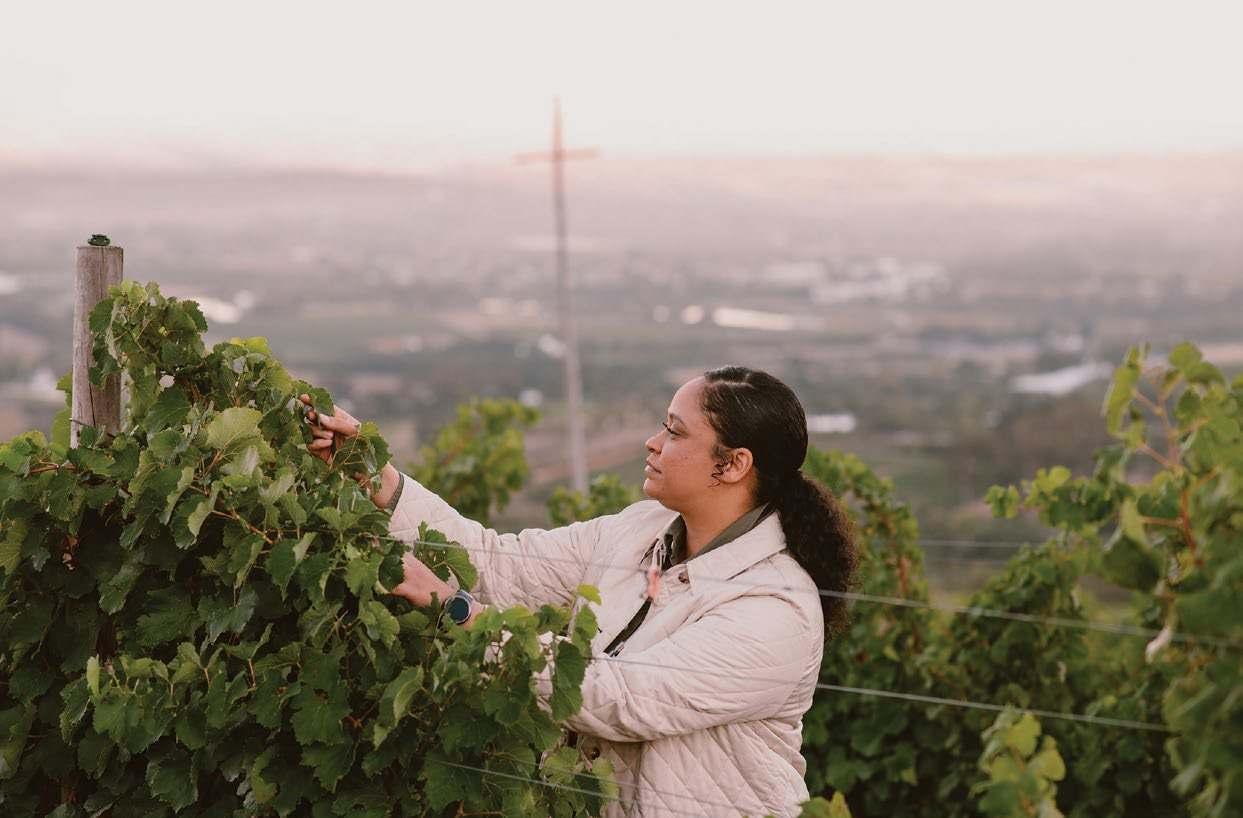
Across the spectrum,

with large portfolios to independent winemakers, sustainability is today’s noble pursuit - whether it is under the Tuscan sun or in sunny South Africa.
Currently, there are over 30 certified organic wineries in South Africa. These range from vintners with large portfolios to small garagista winemakers. Regardless of size, they have been recognised at home and abroad not only for their sustainable winemaking practices, but also for the quality of their wine. There are various international standards and controls that apply, in order to achieve organic certification in specific countries and regions. Organic winemaking methods are rigorously followed from the vineyard, into the cellar.
One of Stellenbosch’s oldest wineries, Spier, was recognised by the 2022 Platters Guide for two organic wines that are exclusively available from Spier’s wine shop and its online store. The First Stone Organic Red Blend 2018 and the Spier Farmhouse Organic Chenin Blanc 2019 achieved a 4.5-star rating each.
“Spier started the organic conversion process in 2011, growing from 21 ha of certified organic vineyards in 2015 to 118 ha in 2022. This long-term commitment to making organic wines is in keeping with Spier’s ethically-, environmentally- and socially-conscious farming philosophy in which we harness the goodness of nature in ways that are kind to the earth,” explains Spier’s organic Winemaker, Tania Kleintjes.
Spier Cellar Master, Johan Jordaan, remarks that “2021 was one for our winemaking books. Having recently taken the reins from the now MD, Frans Smit, there is no doubt in my mind that winemaking is an inherited legacy of good choices and future thinking. I believe these Platter’s results are proof that the Spier team is headed towards an even brighter future.”
It is largely for this reason that Platters Guide selected Spier as the “Editor’s Award – Winery of the Year for 2022” in recognition of the team’s performance and track record, and its outstanding international representation of South African wine.
Further afield, South African winemaker Manfred Ing has been making waves at Querciabella, one of Italy’s top wineries, which happens to be organic, biodynamic and vegan. Previously, Ing worked in the Napa Valley in California, USA, and in New Zealand and Piedmonte in northwest Italy. Before leaving South Africa he worked at Villafonté in the summer of 2007 when Villafonté was still making its wine at Tokara Wine Estate.
While Ing has not yet lost his Mzansi accent, his use of hand gestures when he speaks has taken on slightly more Italian inflections: “I am lucky, I’m under no commercial pressure, it needs to be excellent. There is an annual volume of 160 000 bottles of Chianti Classico and 14 000 bottles of Reserva. It’s not enough to go around the world. More than 50% of Chianti Classico is certified organic, this shows that it can be done. “Viticulture is monoculture but Querciabella means ‘beautiful oak’. Biodiversity brings bees, insects and wild boar.”
Extending the vineyard plant population beyond grapes and encouraging biodiversity has been a concerted effort in Italy.
“Querciabella has been certified European vegan since at least 1996 and biodynamic since 2000. Sebastiano Cossia Castiglioni, the owner of the farm, has been vegetarian and vegan for 20 years. He is a vegan venture capitalist on the New York Stock Exchange. We have eliminated all animal products and animal byproducts - particularly manures - so we had to step up our cover-crop game,” Ing says.
In the past, organic wine was joked about as being “cloudy with a chance of wine”, however, viticulturists and winemakers have clearly stepped up, adopting avant-garde and sustainable vinification techniques that result in wines that are consciously good. The proverbial silver lining of that “cloud” can now be appreciated in the glass…
A recent citrus production and market outlook by the Bureau for Food and Agricultural Policy (BFAP) confirms firm foundations for concern about the medium to long-term global challenges faced by the South African citrus industry. The study has been commissioned by the Citrus Growers’ Association (CGA).
Jan Greyling CONTRIBUTOR“Our study highlights that the industry in 2022 is facing a perfect storm holding a major risk to its long-term survival over the next few years,” says Justin Chadwick, CEO of the CGA.
“The study shows that the industry comes up against:
• Increased production costs.
• A major rise in farming input costs.
• A decline in real export prices, which is likely to remain for the next few years.”
These realities are compounded by the major economic constraints that exist in South Africa e.g.:
• Ongoing fiscal pressure.
• Persistent load shedding.
• High unemployment rates.
• Low levels of consumer and business confidence.
Mr Chadwick says the inefficiencies within the industry are exacerbated by continued operational issues at South African ports. “While there have been some improvements as a result of financial and operational interventions driven by Transnet over recent months, the Durban, Ngqura and Cape Town ports’ containers continued to run below full capacity.”
The BFAP study also predicts that there will be a decline in real prices across all citrus varietals from 2022 to 2030.
A simulation analyses has been developed by the survey team. The simulation factored in a variety of variables – including the above - to determine what might happen to farm-level profitability over the next decade across all citrus commodities and grower regions in South Africa.

“Concerningly, the model reveals that within the next two to three years, most local growers face the real threat of moving into a negative profit margin (before even considering interest on long term loans and taxes), which will continue to worsen up to 2030,” says Mr Chadwick.

He adds that the long-term survival of the industry and the 130 000 jobs it sustains is under severe threat should the current status quo persist.
“For this reason, it is critical that the sector and its key part-
ners, including government, does what it can to alter this current trajectory and safeguard the long-term sustainability and profitability of the industry.”
The CGA advise that while soaring input costs, driven by global forces, are out of the industry’s control, citrus growers could take a few precautionary steps to potentially assist the sector to remain more resilient “and ensure it remains profitable”.
Mr Chadwick says proactive measurements include potentially reducing the amount of citrus produced by:
• Removing older orchards.
• Erecting netting over orchards to improve pack-out percentages.
• Reducing production yields while increasing fruit sizes that are favoured for exports.
• Increasing yields to reduce the unit cost of production.
He says the BFAP team has put each of these scenarios through the industry simulation analysis. “They showed varying degrees of success when it comes to ensuring growers remain profitable over the next 10 years.”
These scenario options have all been presented to and discussed with the grower regions. Currently, these proposed proactive actions are being considered as possible steps on citrus farms moving forward.
Mr Chadwick confirms that the CGA is currently investigating the feasibility of collaborating with other fruit sectors to take control of their shipping to guarantee some price stability in the future to improve the management of soaring freight costs. This research should be completed by September 2022 and the outcomes will be communicated.
He says there are additional factors crucial to the future survival of the industry. “Growers need to note that the key markets, offering the major potential for expanded access and need to get focused attention during the upcoming season, are the United States, India, China, Japan, South Korea and the Philippines.
“This is the only way the growers will be able to offset increasing input costs that are squeezing their profit margins and for our industry to remain competitive and resilient enough to withstand and respond to events out of its control,” he concludes.
The CGA advise that while soaring input costs, driven by global forces are out of the industry’s control, citrus growers could take a few precautionary steps to potentially assist the sector to remain more resilient “and ensure it remains profitable”.
Treevix® is ’n nuwe innoverende onkruidbestuuroplossing vir die beheer van moeilik beheerbare breëblaaronkruide in sitrusboorde, insluitend sekere ALS, triasien en glifosaat weerstandige biotipe onkruide. Met Treevix® word ’n dramatiese verbetering in sitrusboord onkruidbeheer teweeggebring deur die kragtige blaaraktiwiteit en uitstekende sistemiese werking in onkruide. Die werking is aansienlik vinniger as huidige oplossings in die sitrus bedryf. Doeltreffende onkruidbeheer verminder onkruidsaadproduksie wat gevolglik verlaagde onkruiddruk in toekomstige seisoene meebring. Treevix® is ’n ideale komponent in ’n breëblaaronkruid-weerstandbestuurprogram vir sitrusboorde.
Cabrio® is die staatmaker wat sitrusswartvlek (Guignardia citricarpa) betref en gemoedsrus verseker wanneer vrugte vir uitvoer bestem is. Cabrio® vorm deel van ’n reeks BASF produkte wat aan die vereistes voldoen om ’n AgCelence®oplossing genoem te kan word. Hierdie kriteria behels verhoogde plantgroeidoeltreffendheid en plantstresverdraagsaamheid, verlengde vrugdrag van ouer bome sowel as meer eenvormige vruggroottes wat optimale uitpak verseker. Cabrio® is ’n beproefde oplossing en word gebruik deur talle uitvoer sitrusprodusente op verskeie sitrusvarieteite
Broadband® is ’n top-presterende biologiese insekdoder vir die beheer van valskodlingmot in sitrus, wat jou die beste kwaliteit vrugte vir die uitvoermark verseker. Broadband® se insluiting in ’n valskodlingmot-beheerprogram verseker gemoedsrus wanneer vrugte vir die uitvoermark bestem is. Die hoë konsentrasie Beauveria bassiana spore in Broadband® beloop ’n minimum van 4 x 109 lewenskragtige spore per mℓ en is aktief op alle fases van die inseklewenssiklus - eiers, larwes, onvolwassenes en volwassenes.
Broadband® is ideaal vir insekweerstandbestuurprogramme aangesien geen weerstand opgebou word nie. Broadband® sal ook witvlieg en rooidopluis beheer indien teenwoordig tydens die valskodlingmotbespuiting laat in die seisoen. Die gerieflike vloeibare formulasie is uniek en kan vir tot en met 20 maande by 4 °C gestoor word. Die vloeibare formulasie maak uitgooi en meng makliker as droë formulasies. Met geen MRL beperkings, kan Broadband® gedurende enige groeistadium van die gewas toegedien word en is ’n ideale oplossing vir gebruik in ’n IPB (lntegreerde Plaagbestuurprogram) vir valskodlingmot.
Hunter® 24 SC is ’n insekdoder met ’n besonderse wyse van werking. Hierdie hoogs-effektiewe oplossing beheer blaaspootjies met maagaktiwiteit. Geen bekende kruisweerstand is aangemeld teen ander insekdoders nie, dus is dit ideeal om in ’n weerstandsbestuur program te gebruik. Die nawerking op larwes, nimfe en volwasse insekte verseker langdurige beheer.
Hunter® 24 SC is uiters reënvas na toediening, word in minder as ’n uur geabsorbeer en versprei deur die blare (translaminêr) sodat blaaspootjies wat nie direk blootgestel is nie, bv. aan die onderkant van die blaar, ook beheer word. ’n Gerieflike blaarbespuiting of lokaastoediening opsie is beskikbaar vir toediening voor blomblaarval, sodat vrugte optimaal beskerm word en die risiko vir residue in vrugte beperk word.
Hunter® 24 SC moet gedurende die seisoen as deel van ’n geïntegreerde blaaspootjiebeheerprogram gebruik word.
BASF verseker kwaliteit produkte wat deeglik getoets is en tegnies ondersteun word.
Lees altyd die etiket en volg gebruiksaanwysings getrou. Vir navrae besoek ons webwerf vir u naaste kontakpersoon www.agro.basf.co.za


South Africa is way more than halfway through the 2022 citrus season. However, packing is lagging previous years and by the end of July stood at 62 million 15 kg cartons, compared with 67 million in 2021 and 70 million in 2020. It is especially slow fruit ripening that is costing the industry this year.
Jan Greyling CONTRIBUTORIn total South Africa is expected to export 166,8 million cartons. Last year resulted in a total export total of 161 million 15 kg cartons.
By the end of July 2022, around 50 million cartons had still to be packed and shipped in the northern production area. It was estimated that about the same numbers applied to the southern growing regions. The majority of these were destined to be going out from the Durban Port in the Indian Ocean.
According to the Citrus Growers’ Association (GCA), exports of class 2 navels have been cut back and the navel export estimate has been adjusted from 28,7 million to 27,2 million cartons. The same could happen to unpopular and large counts of late mandarin.
The grapefruit estimate has been reduced from 16,8 to 15,7 million cartons and it is possible, says an exporter, that much of the grapefruit still hanging on the trees will have to be sent to juice because of constrained availability of vessel space.
The soft citrus export estimate was at 34,1 million cartons at the halfway mark of the season.

At the request of the CGA, some of the citrus varietals supplied crop and export estimations by the end of Week 27:
Valencias
“An estimated 57,6 million (15 kg) cartons of valencias are predicted to be exported in 2022, which will be a 2,6 million increase from the 55 million cartons shipped last season. However, the final number shipped could decrease depending on market conditions towards the end of the season, in particular narrowing market windows which could make it difficult to ship remaining volumes.”

As usual, the aim of South African valencia packers was for China to hit the pre-Moon Festival market. According to the Chinese festival calendar, they usually have until the beginning of September before the peak of the market at about 10 September, whereafter prices start to decrease.
The pressure to get the valencias out in time has been putting more pressure on the ability of the Durban Port and, according to the CGA, on the steri-capacity of the already overloaded cold stores, which are running at full capacity this year.
Towards August two-thirds of the citrus crop were still on the trees. Theoretically, approximately a hundred million cartons still had to be handled by the system over the last 15 weeks of the citrus season. These were mostly grapefruit, valencias and the late mandarins.
The prediction for these popular immune boosters was standing at 32,4 million 15 kg cartons to be exported to key markets by the middle of the current season - an increase of 1,4 million cartons compared to last year. Contributors to this increase include the first fruit from young trees in regions e.g. the Western Cape and Senwes in Limpopo. The cooler summer climate may, however, have contributed to fruit being smaller in certain areas impacting the final number of cartons packed and exported.
In line with its contribution in 2021, the estimate for these popular winter favourites showed 27,2 million cartons of 15







The unique formulation has a smaller carbon footprint and therefore less of an impact on the environment
Provides immediate protection against feeding damage, but is safe for natural enemies
AGRIMEC® Gold. The smart choice.
kg each expected to be exported by the end of the season. Hailstorms in areas such as the Eastern Cape Midlands led to a decrease in predicted estimates. On the contrary, good rains in regions like the Sundays River Valley have contributed to an estimated 9% growth in navel export volumes in the area.
Grapefruit

A range of external factors is expected to impact negatively the estimated 15,3 million cartons of 15 kg grapefruit which has been predicted to be exported in 2022. These include the Russian conflict in Ukraine due to Russia being a major importer of South African grapefruit. In addition, should fuel and shipping costs continue to escalate, PP fruit that is sent for processing and Class 2 grapefruit will not be exported which will reduce the final export total. Export figures across the different grapefruit categories are reflected in the tables below.
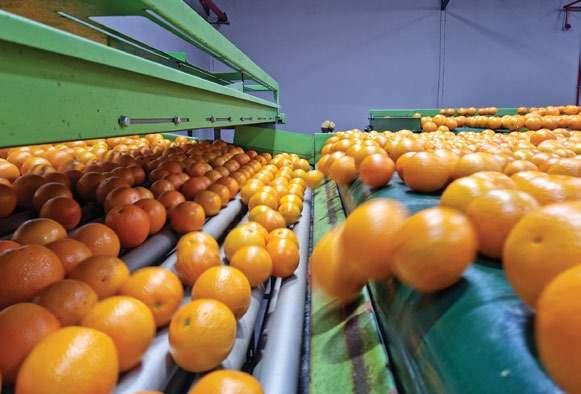
Mandarins
In this category, the preliminary forecast was in the region of 33,7 million 15 kg cartons for export to foreign markets in 2022. This estimate indicated a 2,8 million carton increase in the export performance of mandarin varietals packed and shipped in 2021.
For easy citrus export comparison, a year-to-date analysis, towards the end of July, of shipped figures, based on the country destination in 2020, 2021 and 2022 is provided by the Citrus Growers’ Association.

Die ontwikkeling van ’n goeie en gesonde grondprofiel vir sitrus behels nie net die normale en bekende balans tussen biologiese, chemiese en fisiese faktore nie, maar ook broodnodige goeie bestuurspraktyke.
Belangrike bestuurspraktyke behels die regte tydsberekening van aksies en toedienings, asook die minimum vermorsing van skaars en duur hulpbronne. Ten einde vermorsing te beperk, asook om te bepaal hoe doeltreffend die aksies, tydsberekening en voorafbeplanning was, is dit noodsaaklik om grondgesondheid te evalueer.
NexusAG ondersteun die bevordering van grondgesondheid en -evaluering en is voortdurend besig met navorsingsproewe op hiérdie gebied.
Om die belang van grond-evaluering in sitrusproduksie te verstaan, moet die volgende in ag geneem word:
• ’n Goeie begrip van al die beperkings en nie net voedingstoftekorte of -oormaat nie, is nodig;
• ’n Beter oorsig van die belangrikheid van grondgesondheid in die produksieproses;
• Teiken bestuurspraktyke om grondbeperkings reg te stel en aandag te gee;
• Monitor grondverbetering of -agteruitgang weens onvoldoende bestuurspraktyke en werk bestuursplan uit;
• Fasiliteer toegepaste navorsing met betrekking tot spesifieke boorde se grondgesondheid;
• Vergelyk bestuurspraktyke ten einde aanbevelings op ’n plaas- of blok-spesifieke vlak te kan doen; en
• Bereken die sisteem-risiko na aanleiding van boerderypraktyke.
Grondgesondheid behels die idee dat grond ’n ekosisteem vol lewe is, wat versigtig bestuur moet word om die grond se vermoë om optimaal te kan funksioneer, te herwin en te onderhou. Een van die grootste impak-verskille wat ’n beduidende verandering in die ekosisteem kan maak, is die hervestiging van mikro-organismes. Met die ontrafeling van die vraag oor wat mikro-organismes nodig het, het tydsberekening in bestuurspraktyke baie belangrik word.
Mikro-organismes benodig die volgende om suksesvol en in balans te kan funksioneer:
• ’n plek om te vestig;
• voedingstowwe;
• water;
• suurstof; en
• goeie temperature.
Indien bogenoemde ontbreek of beperkend voorkom, maak dit nie sin om geld en tyd aan mikro-organismehervestiging te spandeer nie.
Die hervestiging van tussenry-dekgewasse met die nodige kombinasie van bestuurspraktyke om die dekgewasse te sny en op die bankie te gooi, in kombinasie met kompos, asook ’n opdie-bankie deklaag van plantmateriaal (enigiets wat op plaas beskikbaar is, van bas tot blare), veroorsaak goeie temperatuurregulering.
’n Laag word daarmee geskep wat nie net beskerming teen die harde sonstrale bied nie, maar ’n ook stelsel wat waterhouvermoë verbeter en goeie suurstof beskikbaar stel. Hierdie stelsel skep ’n goeie tuiste vir die mikro-organismes en terselfdertyd berg dit water en suurstof, met goeie temperatuur-regulering.
Indien gebruik gemaak word van ’n verskeidenheid plante, is daar gevolglik ook kos vir ’n verskeidenheid mikro-organismes. Die eerste en belangrikste stap om goeie grondgesondheid te bewerkstellig, is dus die skepping van ’n gunstige tuiste. Hier is spesie-diversiteit baie belangrik om ’n goeie verskeidenheid tuistes te vestig.
Sodra daar ’n goeie tuiste vir die mikro-organismes is, kan gekyk word na ’n goeie voedselbron om saam met die mikroorganismes toe te dien, in ’n tyd van die jaar waar grondtemperature reeds begin toeneem het en goeie vermeerdering vinnig kan plaasvind.
Oktober, November en Desember is die beste toedieningstye, asook Maart en April. Vir die warm somermaande, Januarie en Februarie, is die teenwoordigheid van ’n organiese deklaag of dekgewas verkieslik om die organismes te help vestig en te beskerm teen die warm son, maar nie die beste twee maande vir toediening nie.

Die periodes waar sitrusbome ’n wortelstuwing ondervind, is ook ’n belangrike tyd vir mikro-organimetoediening. Mikro-organismes speel ’n baie belangrike rol in die voedingsbalans in die grond, wat die plant help met voedingsopname. Terselfdertyd skei mikro-organismes ook stowwe af wat die boom - en veral die boomwortels - stimuleer om te groei. Gevolglik kan gekyk word na watter tyd van die jaar beide goeie grondtemperatuur en goeie wortelstuwing voorkom. Gevolglik is November en Maart die beste tyd vir só ’n toediening. ’n Mikro-organisme voedingsbron wat terselfdertyd toegedien word, kan tot optimale resultate lei.

Tydsberekening is gevolglik krities. ’n Produksiekalender, met jaar-evaluering in April en beplanning vir die nuwe seisoen in Julie/Augustus, is gevolglik ook belangrik vir goeie grondgesondheid.
Kontak NexusAG by 021 860 8040 of www.nexusag.net vir meer inligting.
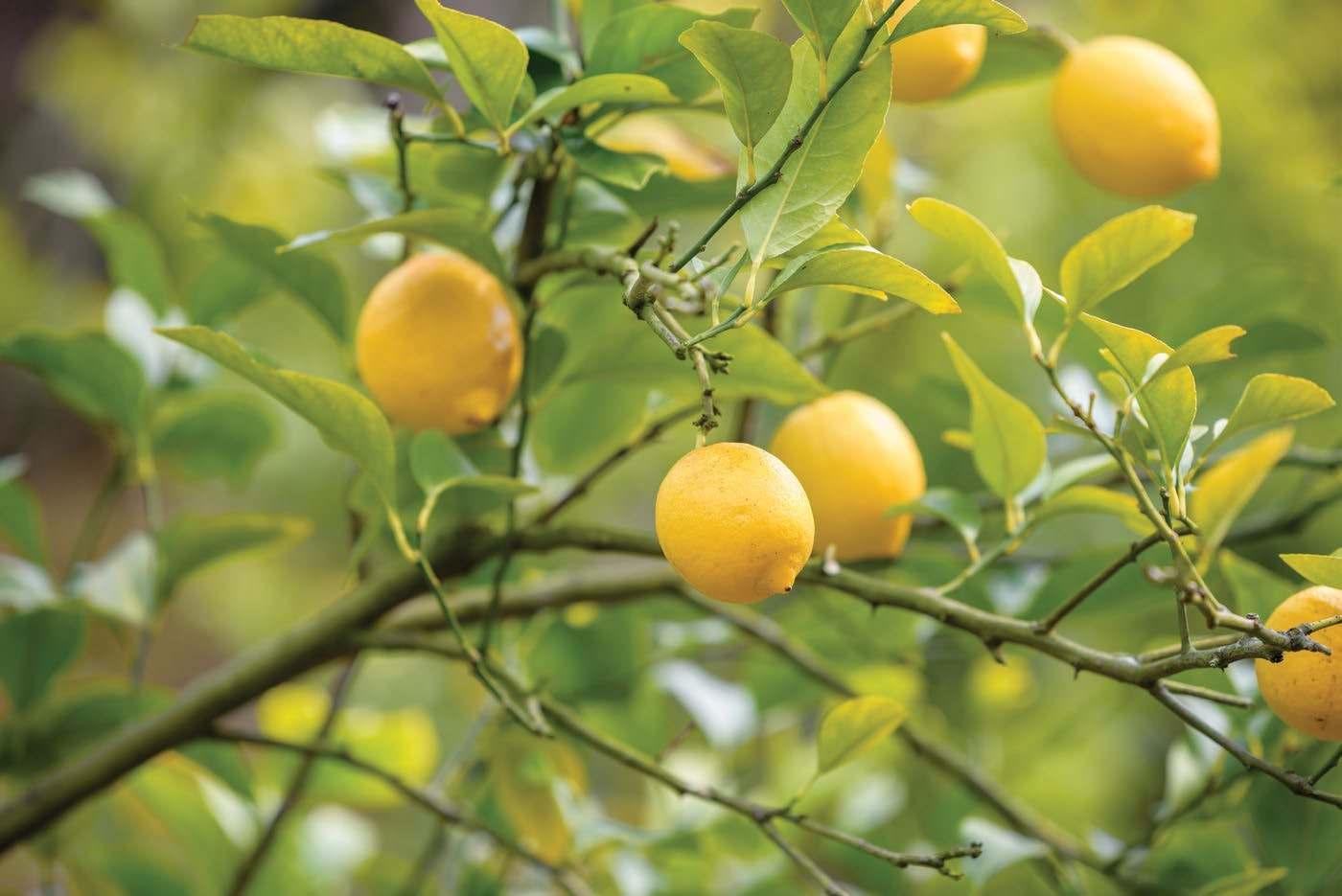
Sakata Saad belê reeds langer as 100 jaar in intensiewe navorsing wat lei tot die produksie van variëteite wat produsente toelaat om groente van uitstekende kwaliteit te produseer.
Goeie kwaliteit is tot almal se voordeel en sorg dat die produsent, handelaar, verwerker en uiteindelik die verbruiker ‘n waardevolle produk ontvang. In hierdie artikel verskaf Sakata graag besonderhede van hulle nuwe wennervariëteite, asook van ‘n paar ou staatmakers.

Sakata het veral oor die afgelope jare bekendheid verwerf vir hulle botterskorsies van hoë kwaliteit. Met variëteite wat hoë opbrengste, sterk, groeikragtige plante en siekteweerstand teen poeieragtige meeldou bied, het Sakata nuwe standaarde gestel vir botterskorsies in Suid-Afrika. Dit is geen wonder dat Quantum deesdae gesien word as die bedryfstandaard vir warm seisoenproduksie van botterskorsies nie. Quantum lewer eenvormige, mediumgrootte vrugte met uitstekende interne kwaliteit en smaak. Dit beskik oor ‘n uitstekende opbrengspotensiaal met vrugte wat nie maklik kraak nie.
Barnacle Bill is Sakata se F1 baster-Hubbard-skorsie wat homself op verskeie maniere oortref het. Barnacle Bill bied ‘n groot voordeel aan produsente wat vroeg wil oes en steeds goeie kwaliteit vrugte verwag, deurdat die variëteit tot 10 dae vroeër as Chicago Warted geoes kan word. Die vrugte beskik oor ‘n baie goeie raklewe en uitstaande interne kwaliteit.
Waatlemoene bly ‘n gesogte lekkerny en die verbruik daarvan neem steeds toe. Die tekstuur en smaak van ‘n waatlemoen is baie belangrike kenmerke wat in ag geneem moet word in die keuse van nuwe variëteite. Sensei, Sakata se Crimson Sweet-tipe waatlemoen voldoen aan hierdie vereistes. Sensei beskik oor uitstekende interne kwaliteit met ‘n uitsondelike dieprooi kleur. Die vleis is baie ferm, dit het uitstekende smaak en kraak nie maklik intern nie.
Sakata spog ook met ‘n nuwe geslag van spanspekvariëteit met ‘n lang raklewe, genaamd Majestic. Die vleis se tekstuur is ferm en het baie goeie suikerinhoud (Brix) van tussen 14% en 16%. Majestic is wyd aangepas vir warmseisoenproduksie en die plante is groeikragtig met goeie verdraagsaamheid teen hitte.
Invictus* is ‘n nuwe parthenocarpic Engelse komkommer van Bayer wat deur Sakata bemark word. Die vrugkwaliteit van hierdie variëteit is uitstekend en dit het eenvormige, donkergroen en reguit vrugte wat nie neig om nekke te vorm nie. Invictus* is wyd aanpasbaar en beskik oor ‘n baie goeie siektepakket.
Die verbruiker van grysskilpampoene verkies ‘n variëteit met goeie smaak en tekstuur, terwyl die produsent fokus op goeie raklewe. Sampson is Sakata se grysskilpampoen wat aan al hierdie eienskappe voldoen. Sampson is geneties só saamgestel dat die skil ‘n sterk waslaag het vir die behoud van kwaliteit en raklewe. Dit beskik oor sterk, groeikragtige plante met ‘n uitstekende opbrengspotensiaal en kan in somer- en winterproduksiegebiede geplant word. Die vrugte is ferm, dit het ‘n klein saadholte en kan tot ses maande opgeberg.
Tamaties is ’n baie belangrike groentegewas in die Suid-Afrikaanse mark en is regdeur die jaar in groot aanvraag. Marktendense wys dat die prys van tamaties grootendeels deur vraag en aanbod bepaal word. Produsente word hierdeur onder groot druk geplaas met stygende insetkoste, wisselvallige opbreng-


ste en ’n laer aanvraag op die markte. Hierdie faktore dwing die produsent om deeglike strategieë gereed te kry sodat die hoogste moontlike kwaliteit tamaties op die regte tyd op die mark geplaas kan word. Sakata het in die afgelope jare verskeie nuwe tamatievariëteite in die onbeperkte ronde segment vrygestel.

Die Heidi-tamatie word gekenmerk deur goeie vrugkwaliteit, eenvormige vruggrootte en ’n goeie siektepakket. Die plante het ’n goeie blaarbedekking en is baie groeikragtig wat dit minder vatbaar maak vir algemene blaarsiektes. Heidi kan in die oop land of onder beskerming geproduseer word.
Parisa* is ’n nuwe tamatievariëteit uit Sakata se plaaslike teelprogram. Dit word gekenmerk deur ’n kompakte plant met kort internodes wat eenvormige vrugte met goeie kwaliteit produseer. Parisa* presteer gedurende die hoofseisoen
Sweet melon Majestic.

Die bogenoemde variëteite is maar ’n druppel in die emmer uit Sakata se produkreeks. Vir meer inligting oor hierdie produkte of om die totale produkreeks te sien, besoek gerus Sakata se webwerf by www.sakata.co.za


* Eksperimenteel: Hierdie variëteit is steeds eksperimenteel, maar registrasie is reeds ingedien vir Suid-Afrikaanse kultivarlysting
VRYWARINGSKLOUSULE: Die inligting is gebaseer op Sakata se waarnemings en/of inligting van ander bronne. Aangesien gewasprestasie afhang van die interaksie tussen die saad se genetiese potensiaal, die fisiologiese eienskappe daarvan en die omgewing, insluitend bestuurspraktyke, gee Sakata geen uitdruklike waarborg of deur implikasie vir die gewasprestasie in verhouding tot die gegewe inligting. Sakata aanvaar nie enige aanspreeklikheid vir enige direkte verlies, wat te wyte aan enige oorsaak of as gevolg daarvan mag ontstaan nie. Lees asseblief eers Sakata Seed


Fruit production is becoming increasingly important the South African agriculture. Recent estimates by the Buro for Food and Agriculture Policy indicate that the area under high value export fruits and nuts has expanded by 130 000 hectares over the past decade and that export volumes may grow a further 30% by 2031, suggesting that the gross production value could reach R53 billion by 2031, in nominal terms. In addition, the value of citrus and subtropical crops currently stands at R34 billion but by 2031, citrus alone is expected to reach R40 billion.
Mariana Purnell CONTRIBUTOR
Apart from the known infrastructure problems like ports, roads and irrigation schemes that will impact the horticulture industry going forward, the impact of climate change is an unknown factor.
However, there are many challenges for worldwide agriculture. By 2050 we will need to produce 60 to 100% more food. The US anticipates that its fresh fruit imports will rise by 45% as the land available for farming shrinks. The pressure is on to improve productivity or use marginal land.
Adapting production systems to be resilient against extreme climates and adverse environmental conditions is a growing priority. The focus has now turned to a range of climate smart solutions, including biotechnology innovations that allow scientists to explore the potential of science to minimise the impacts of climate change.
At a recent Croplife seminar, Chris Dardick, Lead Scientist at the US Department of Agriculture, explained the approach of the Agricultural Research Service (USDA-ARS) to both climate change and improved environmental stewardship in order to reduce environmental impacts of agricultural systems and enhance the ability of farmers to secure fruit supplies in the future.
Biotechnology strategies are focused on improving both the productivity and the production practices, as well as their sustainability with regard to chemical and water inputs and the climate response of orchard systems. But there are nu-
merous challenges for fruit crop genetic improvement. Fruit trees are large, perennial, propagated vegetatively and slow growing. They have very particular environmental needs, are also subject to dormancy which is cold induced and have high water requirements. Despite the fruit being highly perishable, consumers expect beautiful, blemish-free products regardless of the important role played by chemical inputs as well as storage and shipping.
Plant architecture has become a critical feature of fruit and nut tree sustainability as it affects the productivity of the system and the environment. The now established technique of training branches allows for better light capture due to improved light penetration, which improves the fruit quality as a result of enhanced colouration.
In peach and apple orchards, for example, the trees are pruned into a plant wall rather than free-standing trees and managed through labour intensive practices to optimize light capture and fruit quality. The light penetration is important for the fruit as it impacts the efficiency of the trees in terms of transportating water and nutrients.
Other horticultural issues are transpiration and water use efficiency, access to water and nutrients as well as tolerance to drought and flooding. Typically, the top of the tree is grafted onto a special root stock, bred for its ability to access water and nutrients and also tolerate flooding.
From an economic standpoint there are also benefits as there is much higher productivity on less land with fewer chemical inputs.



FROM PAGE 18

According to Dardick, they are also introducing specific traits that influence plant architecture into various crops. The loss of the TAC1 gene leads to upright, compact plant architecture suited for high density planting in plum, tomato and peach production. The loss of LAZY1 gene in plums has led to low growing trees that can be managed from the ground. A gene called DRO 1 regulates the lateral root angle and enables the development of a much deeper root system in plums.
Fruit crops require a period of dormancy which is typically cold induced. Climate change is causing changes in the climate zones where fruit can be grown. Altered plant hardiness zones and production ranges result in reduced chilling and increased abiotic stress. It also exacerbates spring frost. Research is thus focusing on manipulating plant dormancy and bloom.
Scientists have found that the EVG locus controls dormancy onset in peaches. They have successfully manipulated the gene that represses flowering at low range temperatures in plums to alter dormancy and bloom time.

The fastest growing agricultural sector in the US is vertical farming where crops are produced in a controlled environment. These agricultural operations have thus far focused on leafy greens and vegetables, with companies like AeroFarms,





Bowery, Plenty and Toshiba taking the lead. But scientists are now turning to techniques to adapt fruit trees for indoor farming under controlled environments. Through flowering controlled by temperature, research on plums has already shown the potential for smaller tree size, continual flowering and setting fruit all year round as well as no dormancy requirement.
The advantage of these indoor fully controlled farms is that there are little or no chemical inputs - they do not use pesticides and are highly productive. The downside is that they are very energy intensive. But, he argues, what this development shows is that biotechnology can be used to dramatically change the way we grow and produce some of these crops in a more environmentally sustainable manner.
In addition to the various applications to deliver climate resilient crops, research is also targeting marginal soils - previously unsuitable landscapes that are not really usable and have a negative environmental footprint. Following the rehabilitation of coal mines, rootstocks are now available to support fruit trees in such areas.
Apple rootstocks were developed from wild apple species growing in marginal land with poor nutrient conditions, specifically for use on such mining sites. By using a combination of soil amendment strategies and genetics they now have productive orchards on previously unused lands. Similarly, it has been found that apple rootstock ability to uptake heavy metals is genetic. Research will now focus on identifying rootstocks that do not take up heavy metals or do so very inefficiently to be incorporated into new approaches.

The higher agricultural commodity prices we have observed in the months since Russia invaded Ukraine, continue to filter into the food price inflation data. Moreover, the higher fuel price inflation since the start of the war is an additional cost driver of food prices.
Wandile Sihlobo AGRICULTURAL ECONOMICS TODAY







The data released recently by Statistics South Africa show that in July 2022, the consumer food price inflation accelerated by 10,1% y/y, from 9% y/y in the previous month. This is the fastest pace since January 2017, which was a drought period in agriculture where costs were driven by higher agricultural commodity prices.








The higher global grains and oilseed prices for much of the first half of this year have been the drivers of the costs of “bread and cereals” and “oils and fats” in the consumer food price inflation basket.





These are also products with a relatively higher weighting within the food basket. For example, within the food basket the key products are meat (35%), bread and cereals (21%), milk, cheese and eggs (17%), vegetables (8%), sugar, sweets and desserts (4%), oils and fats (3%) and fruit (2%).


The grains and oilseeds prices, which have been the major drivers of the surge in inflation, are starting to soften and this shows in the global indices. In fact, the FAO’s Global Food Price Index averaged 140,9 points in July 2022, down by 9% from June.

This was the fourth consecutive monthly decline, led by the drop in the prices of grains and oilseeds. These global developments are starting to show also in South Africa and the lag could also reflect on the consumer food price inflation data in the coming months. Therefore, we suspect this might be a peak in the domestic food consumer price inflation.
In the case of fruits and vegetables, South Africa has a sizable harvest and the disruption in fruit exports within the Black Sea and the European Union could add downward pressure on domestic prices.

This bodes well for the consumer in the near term but the opposite is true for the farmers. The one essential product whose price trend remains uncertain is meat. The outbreaks of foot-and-mouth disease have led to the temporary closure of some key export markets for the red meat industry. Ordinarily, this would add downward pressure on prices as it implies that we would see an increase in domestic meat supplies.
But this time around, the spread of the outbreak is vast, to an extent that we might see a decline in slaughtering in major feedlots, which would ultimately keep red meat prices at relatively higher levels; the opposite of what we initially anticipated. This remains uncertain and we will closely monitor the monthly slaughtering activity.


Positively, the suspension of the anti-dumping duties for poultry products could help contain the potential price increases in this product, at least in the near term. Still, the broad meat price trend will be dependent on the developments in the beef market.









































Overall, as in the previous months, various factors in the South African food market will likely push in opposing directions in the coming months. Still, South Africa will likely remain an exception from the world, with food price inflation contained at relatively lower levels than most regions of the world.








Sparkle RZ is the new innovation frontier in rocket and the first Rocketeerz variety from Rijk Zwaan. The Rocketeerz line stands for continuous innovations in rocket.
Continuous innovation is becoming increasingly crucial to sustain profitable growth. To support business development, Rijk Zwaan is introducing a unique rocket variety, Sparkle RZ. It combines an attractive round leaf shape with an excellent rocket taste. This novel variety offers new opportunities, both as a mono-leaf product and in leaf mixtures. Research has shown that a round leaf shape with a vibrant green colour is highly attractive to consumers, especially when it is combined with the popular rocket taste.
The variety promises excellent characteristics. Besides its unique look and excellent flavour, Sparkle RZ also offers good growing characteristics, an outstanding shelf life and the possibilities for year-round production and supply.
Advantages during cultivation include thick leaves with
Oor die afgelope drie somerreënseisoene het ‘n innoverende alliansie aan produsente toegang gegee tot volhoubare gewasoplossings, tegniese kundigheid en uiters voordelige kommersiële aanbiedinge. In die proses is deelnemende produsente se gesamentlike insetkoste met bykans R13 miljoen gesny.
Vir alle produsente – groot en klein en in alle sektore van die landbou – bly toegang tot finansiering ’n uitdaging. Stygende rentekoerse en die probleme waarin die Landbank tans gewikkel is, dra verder hiertoe by.
As leiers in die landbou van wie verwag word om toekomstige uitdagings te voorspel en vroegtydig daaraan aandag te gee, het die Kragspan-vennote reeds in 2018 begin werk aan ’n alliansiemodel om produsente se volhoubaarheid ’n hupstoot te gee.
Johan Nienaber, streeksdirekteur (Noord) van InteliGro, verduidelik dat Die Kragspanalliansie tussen InteliGro en VKB se mandaat is om hulpbronne gesamentlik aan te wend om produsente se insetkoste te verminder, en ook om die kwaliteit en kwantiteit van hul produksie deur tegniese kundigheid te optimaliseer.
“Produsente wil nie net die resultate in hul lande sien nie, maar ook in hul bankrekeninge,” sê mnr Nienaber.
Die Kragspan se kommersiële aanbieding gee bankrekeninge regdeur die seisoen ’n blaaskans, verduidelik Bertie Smith, uitvoerende direkteur van VKB.
“Die 0% toeslagkomponent, 0,5% korting op Multigreenkunsmis en 1% korting op Dekalb-saad, 3% afslag op Inteli-
a high yield, stable growth characteristics regardless of the growing conditions. It has high germination and vigour, even in cold conditions with flexibility in terms of leaf size - harvestable from 6 cm to 15 cm with good quality.

Some of the other advantages include a unique and attractive leaf shape, excellent taste, a good shelf life, suitable for countries with long transport times and a year-round production.
Gro-gewasoplossings, asook ’n periode van tot ses maande waar geen rente op produsente se VKB-rekeninge gehef word nie, is slegs moontlik omdat ons verskaffervennote Die Kragspan so heelhartig ondersteun.”

Danksy hierdie ondersteuning, kon Die Kragspan produsente gesamentlik R7,1 miljoen op insetkoste laat spaar in die 2021/22-seisoen. “Dit ondersteun die inisiatief om daadwerklik aandag te gee aan produsente se volhoubaarheid,” sê mnr Nienaber.
Die uitgestelde reëling word ook saamgestel om produsente se aankooppatrone te ondersteun. Rygewasse, byvoorbeeld, se fisiologiese ontwikkeling vereis drie rondtes van gewasoplossingaankope, terwyl aartappels sowel as kern- en steenvrugte deurlopend teen peste en plae beskerm moet word.
Volgens mnr Nienaber is die aanbieding geskoei op die konsep van vertroude besigheidsvennote wat produsente op alle fronte ondersteun.
“Vir tegniese ondersteuning het produsente toegang tot opleiding, betroubare data op peste en plae, spuitklinieke en gewasoplossingsproewe. Die doel is om produsente in staat te stel om die beste moontlike besluite saam met hul vertroude besigheidsvennote te neem. Sodoende word opbrengskwaliteit en -kwantiteit verbeter, asook winsgewendheid en omgewingsvriendelike boerderypraktyke.”
Laasgenoemde is ‘n strategiese stap vir VKB wat tradisioneel in die Vrystaat sake doen. “Ons het besluit dat groei in uitbreiding in ander provinsies lê, asook in groter betrokkenheid in gewasoplossings,” sê mnr Smith.





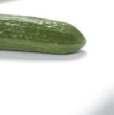


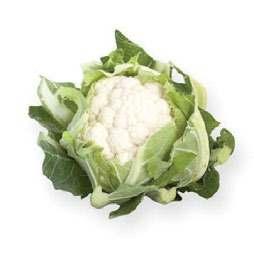








































Soos alle ander toerusting het vurkhysers gereelde instandhouding nodig om die beste diens te bly lewer. As noodsaaklike en waardevolle toerusting in daaglikse groente- en vrugtebedrywighede op die plaas en in die pakhuis of laaisone, is werkende vurkhysers onmisbaar in volhoubare produkverbouing, -bewerking en -verpakking.
Jan Greyling MEDEWERKERDeeglike instandhouding van ‘n industriële of ‘n basiese vurkhyser het koste-implikasies en dit maak die oorweging van doelvervaardigde vurkhysers landwyd ‘n lewensvatbare opsie.
Oor die rol van vurkhysers kan Goscor Lift Truck Company (GLTC) saam gesels na bykans 40 jaar se ervaring in die verkoop en korttermynverhuring daarvan.
Volgens Tanya Brummer, hoofbestuurder: korttermynverhuring by GLTC, is kostebesparing en risikoverspreiding vir volhoubare, winsgewende produksie sinvol in die sakeplan van ‘n varsprodukteprodusent.
Veral wanneer waardevermindering, instandhouding en markgedrewe herverkoopwaarde van toerusting verreken word, is die aankoop van nuwe toerusting nie altyd ideaal nie. Vurkhysers werk dikwels onder moeilike toestande en gereelde instandhouding is nodig om herstelkoste en onproduktiewe staantyd te beperk.
Net soos in die konstruksiebedryf en in die vinnig veranderende omgewing van tegnologie en toerusting, is die korttermynhuur van vurkhysers, wat instandhouding insluit, moontlik meer sinvol as om toerusting self te koop. Eienaarskap van ‘n vurkhyser laat die boer, koelkamer of die pakhuis met ‘n paar uitdagings, wat die korttermyn-huuropsie ekonomies lewensvatbaar maak.
“Sonder dat die boer of onderneming maand na maand moet afbetaal aan vurkhysers, is huurkoste slegs betaalbaar vir die tydperk wanneer bykomende vurkhysers benodig word. Met die instandinghouding ingesluit is daar nie verskuilde of verdere koste nie,” sê Brummer.
In die geval van Goscor is hulle reeds sedert 1984 korttermynverhuurders van vurkhysers. Met groente- en vrugteprodusente landwyd het GLTC takke in Johannesburg, Kaapstad, Pietermaritzburg, Richardsbaai en Oos-Londen, waar hul dienste aan die mark ondersteun word deur die Goscor Industrial & Construction-takke in Nelspruit, Bloemfontein, Gqeberha en George.
GLTC verhuur dieselvurkhysers van 2,5 ton en elektriese vurkhysers van 2,5, 3 en 3,5 ton. “Die toerusting word hoofsaaklik gebruik om vrugte en groente, waar dit nodig is, in koelkamers te pak en om groente en vrugte van die boord af
na die sorterings-, graderings- en verpakkingsaanleg te skuif.” Brummer sê boere, pakhuise en koelkamers het nie nodig om kapitaal vir die behoefte aan vurkhysers af te staan nie. “Aangesien die seisoen in enige groente- en/of vrugtebedryf tussen drie en nege maande lank is, is die huur van vurkhysers, waarby onderhoud reeds ingesluit is, ‘n sinvolle sakebesluit, sonder bykomende kapitale eise.”
Skadehantering
Goscor is verantwoordelik vir die basiese herstel, diens en onderdele van enige verhuurde vurkhyser. Sou die verhuurde toerusting egter in diens van die huurder beskadig word, is dit die huurder se verantwoordelikheid om GLTC vir die skade te vergoed.
“Ons verhuringsooreenkoms is volgens die unieke behoeftes van elke huurder baie buigsaam en huurtermyne kan van een dag tot 12 maande of selfs langer wees,” sê sy.
GLTC se korttermynhuur-vurkhysers is almal teen brand en diefstal verseker. “Ons beveel egter aan dat die huurder bykomende versekering teen skade weens ongelukke of onvoorsiene gebeure uitneem.”
In vurkhyserverhuring word elke kliënt se behoeftes anders hanteer. “Alle faktore word in ag geneem wanneer kwotasies voorberei word. Ons neem byvoorbeeld in ag hoeveel ure ons vurkhyser per maand by die huurder gaan werk en kyk na die aard van die werksterrein.”
Die aankoop- en instandhoudingskoste van vurkhysers vereis noukeurige berekeninge waarin die huuropsie dikwels beter is omdat elke deel van die vurkhyser op ‘n tydstip nagegaan moet word. Daar is daaglikse instandhouding, primêre instandhouding, sekondêre en tersiêre instandhouding.
Só sal die olievlakke in die krukas, die banddruk, lugfilter, koelwater, batterykrag en -koppeling, die hidrouliese rem en die handrem, asook brandstofvakke deeglik op die plaas of in die aanleg nagegaan word.
Benewens die vurkhyser se aandrywing en die gereelde nagaan en vervanging van bande, moet laaitoetse en kompressordruktoetse gereeld uitgevoer word. Die werking van die enjin moet gespesifiseerd nagegaan word en dit sluit die transmissiestelsel in.

Verhuring- en naverhuringsdienste word landwyd aangebied vir doelvervaardigde elektriese, diesel- en petrolvurkhysers.
“Die besluit om te huur eerder as om te koop is ‘n langtermynbesparing, wat enige groente- of vrugteprodusent in staat stel om hul onderneming met minder kapitaal uit te brei.”
Kry doeltreffende beheer van skadelike swamsiektes, insekte en Rooispinmyte met Philagro se kragtige tamatie-treffers:
Rooispinmyte
• Meothrin® beheer onvolwasse en volwasse myte, terwyl Smite® alle onvolwasse stadia, insluitende eiers dood en wyfies steriliseer.
• ‘n Tenkmengsel van Smite® en Meothrin® is die oplossing vir ‘n populasie Rooispinmyte waar eiers, onvolwassenes en volwassenes teenwoordig is. Buiten die effektiwiteit is hierdie tenkmengsel ook die perfekte anti-weerstandsbespuiting.
• Milbeknock® 1% EC is ‘n is `n middel van natuurlike oorsprong wat alle stadiums van die Rooispinmyt lewenssiklus beheer. Hierdie produk pas uitstekend in ‘n anti-weerstandsprogram saam met Smite® en Meothrin® .
Afrika bolwurm en Tamatie blaarmyner (Tuta absoluta)
• SumiPleo® word met groot sukses aangewend vir die beheer van Afrika bolwurm in tamaties en Aartappelmotlarwes in aartapples. SumiPleo® behoort aan ‘n nuwe chemie groep met geen kruisweerstand met ander produkte wat vir dieselfde gebruik geregistreer is nie. SumiPleo® het ook onlangs registrasie ontvang vir die beheer van tamatie Blaarmyner.
• Sumi-Alpha® 200 EC en Sumi-Alpha® 200 EW is twee middels met goeie UV sonligweerstand wat alle Snywurm spesies en Afrika bolwurm effektief in tamaties sal beheer.
Afrika bolwurm en Valslandmeterwurms
• DiPel® DF en Florbac® WG is van natuurlike oorsprong met geen onthoudingsperiode voor oes nie, wat beteken dat produsente tamatievrugte selfs tot een dag voor oes, sonder onthouding, teen kleiner Afrika bolwurms en Valslandmeterwurms kan behandel.
• Hierdie is middels met geen invloed op natuurlike insekvyande asook bestuiwers soos heuningbye he t nie wat sal verseker dat die boer sy oes op die veilige manier beskerm.
Vroeëroes en Botrytis
• Sumisclex® SC is ’n ou staatmaker wat nog gereeld met groot tevredenheid toegedien word teen Vroeëroes en Botrytis op tamaties.
Praat gerus met jou naaste Philagro-agent oor betroubare tamatieprodukte wat werk.
RAADPLEEG DIE ONDERSKEIE PRODUKETIKETTE VIR VOLLEDIGE GEBRUIKSAANWYSINGS & -BEPERKINGS
Smite® (Reg. nr. L6011, Wet nr. 36 van 1947) bevat etoksasool, versigtig. Sumisclex® SC (Reg. nr. L6377, Wet nr. 36 van 1947) bevat prosimidoon. Sumi-Alpha® 200 EC (Reg. nr. L6452, Wet nr. 36 van 1947) bevat esfenvaleraat, giftig. Sumi-Alpha® 200 EW (Reg. nr. L8821, Wet nr. 36 van 1947) bevat esfenvaleraat, skadelik. Meothrin® (Reg. nr. L6385, Wet nr. 36 van 1947) bevat fenpropatrien, giftig. DiPel® DF (Reg. nr. L6441, Wet nr. 36 van 1947) bevat Bacillus thuringiensis var kurstaki. Florbac® WG (Reg. nr. L5531, Wet nr. 36 van 1947) bevat Bacillus thuringiensis var aizawai. Milbeknock® 1% EC (Reg. nr. L6654, Wet nr. 36 van 1947) bevat milbemektien, versigtig. SumiPleo® (Reg. nr. L8377, Wet nr. 36 van 1947) bevat piradaliel dichloropropeen derivaat, versigtig. Milbeknock® is die geregistreerde handelsmerk van Sumitomo Corporation, Japan. Smite®, Sumisclex®, Sumi-Alpha®, SumiPleo® en Meothrin® is geregistreerde handelsmerke van Sumitomo Chemical Company, Japan. Florbac® en DiPel® is die geregistreerde handelsmerke van Valent BioSciences, VSA.
Philagro Suid-Afrika (Edms) Bpk l Reg. nr.: 98/10658107
PostNet Suite #378, Privaatsak X025, Lynnwoodrif 0040
Pretoria: 012 348 8808 l Somerset Wes: 021 851 4163 www.philagro.co.za


With the olive harvest now complete, experts indicate that table olives and Extra Virgin Olive Oil (EVOO) from the 2022 harvest will be excellent. SA Olive CEO, Vittoria Jooste, says that the South African olive industry is really coming of age.
“Our growers’ orchard management practices are constantly improving – from the pruning of their trees to the management of soil and nutrients – and this helps achieve better yields and mitigate some of the adverse factors, such as weather.”
According to SA Olive data, local farmers have produced around 1,6 to 1,7 million litres of EVOO over the last two years. Production is expected to be at a similar level in 2022, despite varying yields across South Africa’s olive growing regions.
The olive harvest in South Africa begins in late February and runs through to June and sometimes even July in some areas. Most olive farms are situated in the Western Cape and the majority deploy traditional methods, manually harvesting their olives and paying specific attention to quality olives that will be used to produce premium Extra Virgin Olive Oils. EVOO makes up over 95% of olive oil production in South Africa. For South Africa’s olive growers, the work does not stop when the harvest ends, because they now must prepare their orchards and prune their trees in readiness for the next crop.
Weather conditions in the Western Cape’s Overberg region were perfect and allowed an easier harvesting process with, for example, Greenleaf Olive Company and Mardouw Olive Estate in the Swellendam area. Both reported increased yields compared to 2021 – Greenleaf’s yield is up by a whopping 40%. Mardouw’s Philip King said that a combination of factors contributed to their record harvest this year.
“We prepared the trees really well last year; this and the perfect weather conditions has resulted in higher olive yields, although the actual oil yield is smaller than in previous years.”

Meanwhile in the Klein Karoo, the olive farmers were not so fortunate. Bad weather has resulted in a smaller crop. Many factors contributed to the low yield, such as increased costs for fuel, water, fertiliser and labour. This means that many farmers will not be exporting their products and will focus their efforts on the local market. This is good news for South African consumers who will be spoilt for choice with top quality 2022 EVOOs, many of which have already won international accolades competing with the best in the world.
André Conradie from Kloovenburg Wine and Olive Estate in Riebeeck-Kasteel, says that increased fuel costs and loadshedding have challenged their operation massively.
“While we currently supply the local market with olives and EVOO, we would like to export to Europe in future and, if all goes well, perhaps over the next year. Some of our trees are 35 years old and like red wine our olives are definitely getting better with age, and we are optimistic about the future.”
The Manager at Tokara, Gert van Dyk, and Jason de Beer, the CEO at Morgenster Estate olive farms in the Western Cape, echoed that they had a much larger crop this harvest compared to 2021. They managed to produce some exceptional quality oils, with distinct organoleptic characteristics, good fruitiness, pronounced bitterness and spiciness and will most definitely meet export standards.
Farmers have expressed thanks to the SA Olive Industry Association for their support during the harvest season and look forward to the upcoming SA Olive Awards which will take place in September 2022 at Laborie Estate in Paarl.
Ms Jooste adds: “With an excellent harvest and good fruit, we expect to celebrate many of our 2022 EVOOs in the upcoming SA Olive Awards. We acknowledge the enormous challenges faced by our producers with loadshedding at its highest at the time of processing, but this is another matter altogether and one that we hope will be soon overcome.”
Amidst bad news, the loadshedding woes and ongoing challenges that face farmers in South Africa, the good news is that 2022 was a bumper harvest for many olive growers.

 Wandile Sihlobo
AGRICULTURAL ECONOMICS TODAY
Wandile Sihlobo
AGRICULTURAL ECONOMICS TODAY
South Africa needs a plan of action, particularly on the four areas of interventions that were consistently outlined in various farmer and agribusiness engagements. government and the industry. Let us look at these themes in turn.




To understand the real challenges of farmers, it is necessary to spend a considerable amount of time on the ground talking to farmers and getting a better feel of the markets. In such engagements in the last week of August 2022, one theme came up time and again in most discussions with role players: it is the need for the diversification of the export markets to non-traditional regions while retaining the sector’s foothold in key markets such as the European Union.
Other issues that keep farmers sitting up and scratching their heads at night are the need to improve logistics – roads, rail and ports; expansion of agricultural finance, particularly developmental finance or flexible finance products for the new entrant farmers; and strengthening of trust between
Firstly, the need to export markets has become even more urgent as agricultural output consistently improves and the country has limited capacity to absorb new produce. South Africa already exports half of its produce, in value terms. Therefore, the efforts of the Agriculture and Agro-processing Master Plan to boost production have to emphasize the expansion of the export markets.
Japan, China, India, Saudi Arabia, Bangladesh, the Philippines and South Korea are among some of the key markets in which South African agribusinesses are interested in expanding their presence. Recent actions from the EU and China (two of the largest export destinations currently) to place non-tariff barriers, hurting South Africa’s interests and export activities,

Ÿ Bevorder aktief die agroekonomiese en omgewingsverantwoordelike kunsmis,-enaglime-praktyke;
Ÿ Ontwikkel 'n positiewe publieke bewustheid en aanvaarding van die behoefte aan kunsmis, bio-kunsmis en landboukalk-gebruik in voedselproduksie;
Ÿ Verbeter die bedryfsomgewing waarbinne sy samestellende nywerhede funksioneer in 'n geesvanvryeondernemingen billikehandel;

Ÿ Assimileer,voegwaardetoetot en versprei kunsmis, biokunsmis en landboukalk verwanteinligting;
Ÿ Voorsien 'n gespreksforum vir syledeenanderpartyeooralle aspekte wat verband hou met kunsmis, bio-kunsmis en landboukalkverspreiding, agronomiese advies en produkkwaliteit.
Fertasa en sy lede is verbind tot die bevordering van volhoubare grondvrugbaarheid en verbeterde plantvoeding.


FROM PAGE 27
highlight the importance of diversifying destination markets.
Resolving the non-tariff barriers challenge or expansion to new markets is not a job of the private sector or organised agriculture alone. The government should work hand-in-hand with the industry stakeholders in creating a “South Africa Inc.” plan for widening exports. The building blocks for such a plan are already in the agriculture and agro-processing master plan.
Still, given the urgency of this matter, South Africa needs a dedicated working group that will champion the expansion of the country’s agriculture exports and work towards servicing the existing markets to avoid challenges, such as the constraints faced by the citrus industry in the EU or wool in China.

Secondly, the need for network industries’ improvements was highlighted as there haven’t been material improvements, particularly on roads. The agricultural sector role-players are in regular conversations with Transnet regarding the effectiveness and efficiency of the ports.
Private sector role players want to explore possibilities of better partnerships in the various nodes of the ports, which could help improve efficiencies, not only for agriculture but a range of industries such as mining and automobile, amongst others.
Thirdly, agricultural finance is another topic that has re-





ceived attention in various engagements. This encompasses the Blended Finance programme led by the Department of Agriculture, Land Reform and Rural Development, which should be open to all agribusinesses and financial institutions, and separately, the Land Bank. The Land Bank could also play a key role in supporting the new entrant farmers to the sector, as well as the existing commercial farmers.
At the same time, the government should also support the reform of a critical developmental finance institution i.e., the Land Bank, which has a long history in the sector. The goal should be to build agricultural finance instruments that help grow the agriculture and agribusiness sectors of “South Africa Inc.”.
Fourthly, the broad issue of “trust”, “accountability”, as well as “monitoring and evaluation” are all key to building credibility. This is trust amongst the sector role-players and with the government. The first step in building trust will be to deliver on promises or various aspects affecting the sector.
The government can lead in this effort by implementing reforms outlined in the agriculture and agro-processing mater plan, particularly the parts that do not require capital spending but legislative amendments.
These could be aspects of Agricultural Product Standards Act 119 of 1990 (around the thorny issue of assignees that the industry does not desire or view as value adding to the sector) and aspects of the need for the modernisation of the Fertilizers, Farm Feeds, Seeds and Remedies Act 36 of 1947 (there is already work underway, which could be accelerated), and intensify efforts to open more export markets for South African agriculture, as a few examples. One can summarise this as the following, which are points we made sometime in 2021:




What should the government/DALRRD do in the near term?

• Implement all the regulatory interventions that require less capital and provide consistent updates to social partners.


• Reprioritise the DALRRD budget in line with the master plan interventions. This will signal the government’s commitment to ensuring the plan’s success.
• Support state entities such as Transnet to improve the effectiveness at the ports.
• Work closely with the National Treasury to resolve the Land Bank’s financial challenges so that the bank can play an influential role as outlined in the master plan.
• Intensify efforts to open more export markets for South African agriculture.
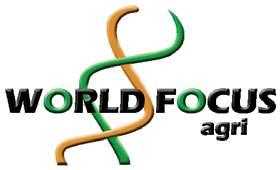


• Release land in the government’s hands to new beneficiaries with long-term tradable land rights or title deeds.
• Root out corruption at various levels within the department to ensure the effectiveness and efficiency of staff.
Notably, these haven’t changed from aspects that bothered sector role-players a year ago, which means we haven’t moved the needle. As agriculture is one of the sectors that will help grow the economy, there needs to be increased attention to the reforms necessary to unlock inclusive growth, and consequently job creation.

South African deciduous fruit may have access to new markets in the coming years, thanks to two new trade agreements. In the meantime, however, a new tariff for fruit has been introduced in East Africa.
 Elise-Marie Steenkamp HORTGRO
Elise-Marie Steenkamp HORTGRO
Trade with other African countries has historically been difficult, due to logistics, governance and complex border control requirements. However, these countries hold significant potential for South African exporters.
If the two massive African trade agreements currently nearing completion can address challenges and barriers to trade, South African companies could benefit from a larger playing field. These trade agreements are the African Continental Free Trade Agreement (AfCFTA) and the Tripartite Free Trade Agreement (TFTA). Though in their final stages, neither of these agreements are functional yet. It is expected that duty-free trade will only begin in 2023 or early 2024.
The AfCFTA covers the entire African continent (although Eritrea hasn’t signed on) and has fifty-four signatory states, making it the largest in the world. The TFTA comprises three existing trade blocs – the East African Community (EAC), Southern African Development Community (SADC) and the Common Market for Eastern and Southern Africa (COMESA) with a total of nearly thirty signatory states.
Thanks to the trade agreement, Protocol and Trade, of the SADC, South Africa has largely been able to export fruit dutyfree to other SADC member states. This agreement has encouraged trade and has meant that South Africa has consistently maintained a large positive trade balance with SADC.
In 2020, 23% of South Africa’s world exports were to the rest of Africa, but of that, only 3% of South Africa’s world exports were to African countries that are not members of SADC. Imports from Africa to South Africa predominantly consist of
crude petroleum oil, accounting for 37% of South Africa’s overall African imports. This illustrates that the SADC trade agreement has facilitated trade, and the trade balance has been in SA’s favour.
Nigeria and Kenia spend around R96 billion and R32 billion on agriculture imports per year, respectively. However, South African exports make up only 2% of this. The bulk of these imports is staple products like wheat, dairy products, sugar, palm oil and maize rather than higher value horticulture.

The South African government has shown a determination to enter this market. This will hopefully translate into an opportunity for agricultural exports. “To make this a reality, government will have to provide effective, comprehensive trade facilitation support for fruit exporters, in order to convince them to diversify away from traditional markets,” says Wolfe Braude, fruit desk manager at Agbiz.
The Department of Agriculture, Land Reform and Rural Development has identified Morocco, Algeria, Libya, Ghana, Guinea, Kenya and Burkina Faso as potential new markets under AfCFTA. While sufficient states have ratified the AfCFTA to make it operational once all outstanding issues are resolved, the TFTA still requires three additional ratifications, with Lesotho being one of them.
In the meantime, unfortunately, South African fruit exporters will now face higher tariffs in East Africa due to the implementation of a new 4th tariff band of 35% by the East African Community. “However, once the AfCFTA and TFTA come into effect, fruit exporters will be allowed to trade at the lower tariffs which will apply under these agreements, as these negotiated Free Trade Area tariffs will overrule the unilaterally imposed EAC 35% band,” explains Braude.

Pumpkin stem borer occurs throughout South Africa, it has also been recorded in other parts of Africa including Sudan, Tanzania, Uganda, Nigeria, Kenya and Mozambique.
Nozibusiso Maphumulo
IPM-PROGRAM, NORTH-WEST UNIVERSITY
Pumpkin stem borer classification:
Class: Insecta (insects)
Order: Coleoptera (beetles)



Family: Cerambycidae
Genus: Apomecyna
Species: binubila
Pumpkin stem borer, which is also known as melon stem borer, is a pest of cucurbits. Plants from the Cucurbitaceae family such as pumpkin, cucumber, watermelon, squash and muskmelon are hosts of this pest.


Females lay eggs on young stems of plants. Eggs hatch within four days after which the legless larvae start feeding on the stem. Larvae pupate inside the stem after 3-4 weeks. Adult beetles emerge from pupae within 4-8 days. The life cycle is therefore completed inside the stems of host plants. There are only two generations per season in South Africa, one in spring and one in autumn.
The eggs of the pumpkin stem borer are white in colour, elongated and have circular ends. The size of the egg is 1,7 mm x 0,5 mm. First-instar larvae are white in colour with a brown head. The size of first-instars is 1,5 mm x 0,5 mm after hatching. The mature larvae have a cylindrical shape that is slightly tapered on the anterior and posterior ends. The body of the mature larvae is soft and white to whitish-yellow in colour. The size of the mature larvae varies depending on food consumption rate, with the average length being 17 mm. Both neonate and mature larvae does not have legs.
The pupa, which is 13 mm long, has a soft body that is yellow to yellowish-brown and becomes darker as it develops. The adults are elongate in shape with a shining dark brown body colour covered with dense white and yellow-brown short hairs that gives it a greyish and dark yellow-brown appearance. Adults are 10 mm to 12,5 mm in length.
Larval feeding inside stems and leaf stalks cause these to split or crack and become swollen. Infested stems eventually die and fail to produce any fruits. Crop failure due to pumpkin stem borer has been reported on different crops, such as cucumbers, muskmelon and watermelon in South Africa. However, pumpkin stem borer is not considered a pest of economic importance of cucurbits although it occasionally inflicts losses. A parasitic wasp, Iphiaulax sp. has been reported as a natural enemy that provides some level of biocontrol.
Enquiries: mashimanenozi03@gmail.com
https://commons.wikimedia.org/wiki/File:Apomecyna_binubila.jpg
https://www.insectimages.org/browse/ taxthumb.cfm?fam= 102&genus =Apomecyna
https://www.gardeningknowhow.com/edible/vegetables/vgen/cucurbit-plantinformation.htm
https://www.homestratosphere.com/wp-content/uploads/2020/08/types-ofmelons-aug192020-min.jpg



First Technology is bridging the gap between one of the oldest industries in the world and the endless wonders of modern and emerging technology. Through infrastructure transformation and a seamless digital ecosystem of traditional and cloud-based offerings, our holistic range of industry-leading solutions offers tremendous flexibility and can be scaled to address the needs of both SMMEs and Large Enterprises.
From warehouse modernisation and streamlining the exportation process, to automating governance and compliance procedures, our solutions will liberate your workforce from menial responsibilities, significantly cut down operational costs and provide your business with the ability to quickly adapt to market demands and needs.